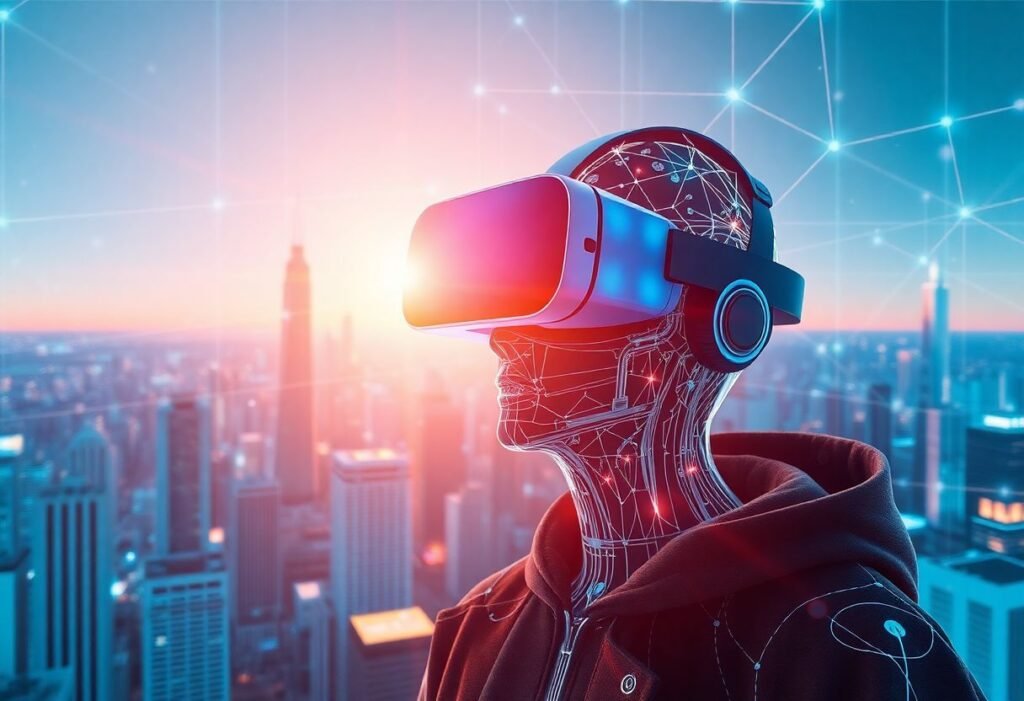Virtual Reality (VR) and Artificial Intelligence (AI) are two revolutionary technologies that, when combined, drive significant innovation across multiple fields. Their intersection is transforming how we interact with digital environments, leading to enhanced user experiences and new possibilities in various industries.
The Rise of Virtual Reality and Artificial Intelligence
In the realm of innovation, the integration of Virtual Reality and Artificial Intelligence is becoming increasingly significant. By merging these technologies, we are witnessing a paradigm shift that enhances the way we experience immersive environments. VR provides interactive platforms for users to engage with computer-generated environments in a visceral way, while AI contributes by analyzing user data to create tailored experiences. This synergy is vital for industries such as entertainment, education, healthcare, and training where immersive experiences are essential. Overall, the fusion of these technologies not only heightens engagement but also leads to more effective learning and interaction.
Applications in Healthcare
The healthcare sector is embracing the merger of VR and AI to revolutionize patient care and medical training. Virtual Reality simulations enable healthcare professionals to practice procedures in a safe, controlled environment, enhancing skill acquisition and confidence. Meanwhile, Artificial Intelligence analyzes patient data and feedback within these simulations, providing personalized recommendations for training and therapeutic practices. For instance, VR therapy is being employed to treat phobias and PTSD by exposing patients to virtual scenarios while AI algorithms customize the exposure levels based on individual responses. The outcome is a more effective, customized treatment approach that emphasizes patient engagement.
Enhancing Education through Immersive Learning
Education has seen remarkable transformation with the introduction of VR and AI. By adopting VR in classrooms, educators can create immersive learning environments that cater to diverse learning styles. AI, on the other hand, helps in tracking student progress and generating insights that allow for adaptive learning experiences. For instance, a history lesson could transport students back to ancient civilizations, allowing them to experience significant events in a captivating way. This combination not only enhances knowledge retention but also cultivates critical thinking and creativity among students, making learning more engaging and effective.
Entertainment and Gaming Innovations
The entertainment industry is witnessing a dramatic shift with the integration of VR and AI, particularly in gaming. With VR gaming, players can immerse themselves in 3D worlds, interacting as never before. AI plays a crucial role in this space by creating dynamic in-game behaviors and challenging non-player characters that adapt to player strategies. This leads to a more nuanced gaming experience where each session feels unique. As developers experiment with these technologies, future games promise to blur the lines between reality and the virtual world even further, captivating players and enhancing their gaming experiences.
Impacts on Business and Training
Businesses are increasingly adopting VR and AI for employee training and development. Virtual simulations allow employees to practice scenarios in real-time, while AI evaluates their performance and gives constructive feedback. For example, companies are employing VR for sales training, allowing representatives to practice pitches in simulated environments with real-time analytics provided by AI. This method not only optimizes training efficiency but also results in higher employee confidence and improved customer interactions. Such advancements signify a new era of corporate training that emphasizes experiential learning and continuous improvement.
The Future of Work with VR and AI
As the workplace continues to evolve, the integration of VR and AI is expected to play a pivotal role in shaping future work environments. Remote working tools enhanced with VR capabilities may redefine collaboration, allowing teams to virtually enter shared spaces irrespective of geographical barriers. AI will augment these interactions by providing intelligent insights based on employee data, tailoring collaborative experiences to meet the team’s needs. Companies pioneering this path are setting trends for a more connected, innovative workforce that values flexibility and cooperation. Embracing VR and AI is not just about staying relevant; it’s about pioneering the future of work.
Disclaimer: This article is for informational purposes only and does not constitute professional advice.





















